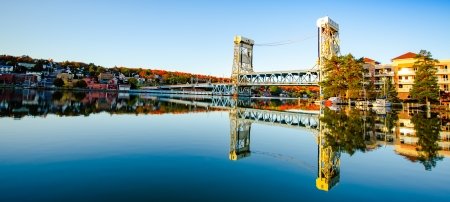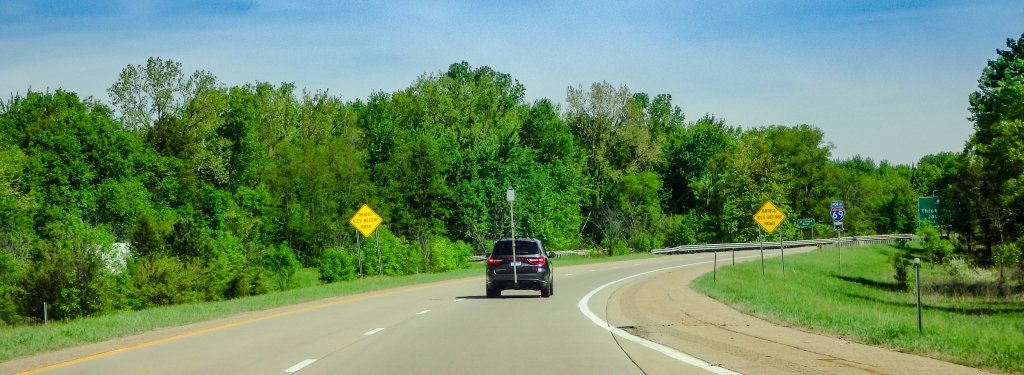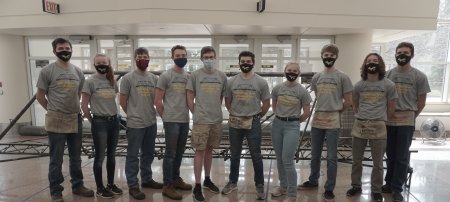Ask Not for Whom the Bridge Tolls
Louise Nelson Dyble was a small-town girl from the mountains of northeastern Washington state when she first saw the San Francisco Bay Area bridges. They blew her away.
“I was amazed and fascinated by the city,” she says. “The whole urban landscape really struck me, especially these enormous bridges. I was always interested in power, and if nothing else, they definitely manifested power.”
Now an assistant professor of social sciences at Michigan Technological University, Dyble was then a history major at the University of California at Berkeley. Her interest turned to transportation, urban studies and the bridges, especially the Golden Gate, which links the tony bedroom communities of Marin County to the traffic-clogged streets of San Francisco.
“Those bridges required a huge commitment of resources, and they didn’t make sense,” she said. “Why bring all these cars to a tiny peninsula with chronic traffic jams and no parking?”
Dyble was by then working on a PhD in History, and answering that question seemed a perfect dissertation topic. She began by asking the Golden Gate Bridge and Highway District for its records. The bridge district public relations officer met her request with prohibitive insurance requirements, claiming the agency could not accept liability for her presence at its offices. Besides, she was told, there already was a history of the bridge, and she could buy it at the gift shop.
Dyble figured then that she was onto a great story, and she was. “Paying the Toll: Local Power, Regional Politics and the Golden Gate Bridge,” the book based on her dissertation, has received the Abel Wolman Award. Presented by the Public Works Historical Society, it recognizes the best new work in public works history.
Dyble tells the tale of the Golden Gate Bridge from 1923, when it was a mere twinkle in the eyes of Northern California boosters, who hoped to lure tourists and their dollars north, and San Francisco leaders, who felt a link with Marin County would cement their city’s position as the region’s main metropolis. “Paying the Toll” then tracks the history of the Golden Gate Bridge and Highway District—a special agency formed just to finance and build the bridge. Although voters were promised that the bridge would be free once it was paid for, the bridge district didn’t want to die. Instead, it fought for survival and won, despite a growing reputation for extravagance and corruption. For the toll-paying public, the district became a loathed symbol of government gone wrong.
While the story is compelling, particularly to commuters saddled with five- and six-dollar daily tolls, the take away is less about the bridge district and more about how things work. “Often you think that the people who were responsible for a project were the ones who actually benefit in the end,” says Dyble. “But they are not always the winners. Decision-making can be extremely complex, and the best intentions can backfire. At the local level there are fantastic power struggles that affect our daily lives by shaping where and how we live.”
Historians can shine light on those struggles. The work can be exhaustive; Dyble went through hundreds of boxes of files pried from the Golden Gate Bridge and Highway District courtesy of a Freedom of Information Act request. “Other good resources are planning and engineering reports,” she says. “A lot of paperwork is generated by consultants and bureaucrats, but they always have a perspective and an agenda. You aren’t going to get real dirt from those.”
For that, you need the fourth estate. An entire shelf of Dyble’s office is devoted to binders of newspaper clippings; Bay Area newspapers had published one exposé after another on the Golden Gate Bridge and Highway District starting in the 1930s. They also published plenty of editorial cartoons lambasting the district. Many are reprinted in “Paying the Toll”; Dyble calls them her favorite part of the book.
She bemoans the loss of a number of newspapers she used in her research, including the San Francisco Examiner. “You only get good investigative journalism if there are multiple competing newspapers,” she says. “Hopefully the new media will take up that slack.”
Dyble is now applying her fascination with transportation and power to two other projects. She is collaborating on a book on the reengineering of the food industry, looking at how the US highway system combined with containerized shipping to push out local foods and enable the rise of corporate agriculture and the supermarket.
She’s also looking at the rise of toll roads and bridges, in particular the Pennsylvania Turnpike. “It has a lot in common with the Golden Gate Bridge and Highway District,” she says, adding cryptically, “Pennsylvania is an interesting state.”
“Paying the Toll” is a cautionary tale for any community grappling with financing a major public works project. US infrastructure is in a state of disrepair, and fixing it extremely expensive. To cash-strapped state and local governments, handing projects over to quasi-independent authorities like the Golden Gate Bridge and Highway District can seem like an ideal solution. But yielding control often has a price down the road. “If the only focus is on building infrastructure and getting it financed quickly and cheaply, you can get in trouble,” says Dyble. “You have to consider the long-term consequences of how you do it.” The winners may not be who you think.
Michigan Technological University is an R1 public research university founded in 1885 in Houghton, and is home to nearly 7,500 students from more than 60 countries around the world. Consistently ranked among the best universities in the country for return on investment, Michigan's flagship technological university offers more than 185 undergraduate and graduate degree programs in science and technology, engineering, computing, forestry, business, health professions, humanities, mathematics, social sciences, and the arts. The rural campus is situated just miles from Lake Superior in Michigan's Upper Peninsula, offering year-round opportunities for outdoor adventure.




Comments